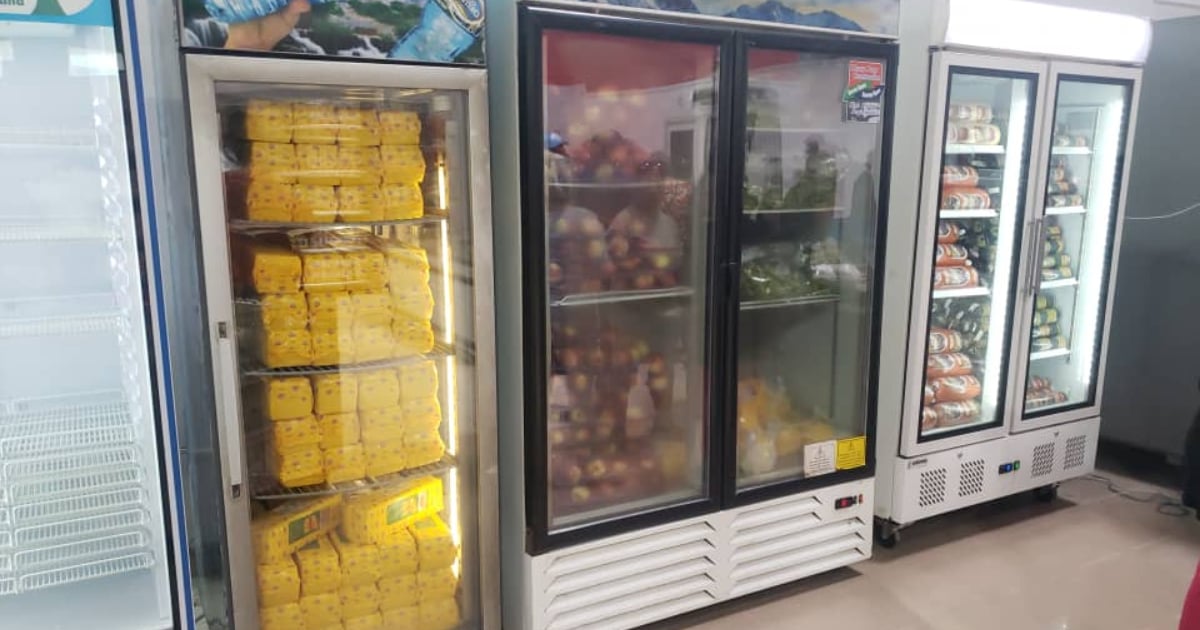The retail chain Tiendas CARIBE has once again opened the doors of the Maravilla Shopping Center, nestled in Havana's Cerro municipality, adopting a new sales approach that allows only dollar transactions. This move aligns with the increasing trend of stores across the island that now operate solely on foreign currency.
Announced through a post on their Facebook page, the Havana West Division of Tiendas CARIBE highlighted the store's reopening, emphasizing its diverse range of products, including food, beverages, perfumes, personal care items, and household goods. Payment can be made using international cards like VISA, MasterCard, and MIR, as well as BANDEC prepaid cards and the AIS, Viajero, and Clásica cards, which offer a 5% cashback on purchases.
Located at the intersection of Calzada del Cerro and Palatino, Maravilla's revival comes amid a heated debate in Cuba over the rise of stores operating exclusively in dollars. This trend exacerbates the disparity between those with access to foreign currency and those reliant solely on the national currency.
This reopening follows the recent relaunch of the Altahabana Shopping Center in March, which also restricted its sales to foreign currencies. The dollar-based sales model has become a core strategy of the Cuban government to tackle the ongoing economic crisis, despite criticism due to the exclusion of a significant portion of the Cuban population who lack access to foreign currency, thus limiting their ability to purchase essential goods.
Back in February, the government initiated its first dollar-exclusive store in Holguín amidst a power outage. Previously operating under Libremente Convertible Currency (MLC), this outlet, part of the "Agua y Jabón" project, offers cleaning supplies, perfumes, household items, and baby products. Unlike other provinces where store openings were publicized, Holguín's store opened quietly. "We must proceed discreetly; we know this causes public discontent," a worker remarked.
This phenomenon showcases the growing dollarization of the Cuban economy, where access to quality products largely depends on citizens' ability to obtain foreign currency, deepening economic divides. Although Tiendas CARIBE markets this approach as a means to provide high-quality goods, many Cubans voice frustration over the difficulty of accessing these products, especially with an average salary of 4,000 pesos, while a dollar is valued at 345 CUP on the black market.
The resurgence of these shopping centers highlights the increasing gap between those that trade in foreign currency and those still operating in Cuban pesos, adding further economic and social tensions to the current crisis. The Ministry of Domestic Trade (MINCIN) has defended the strategy, citing insufficient availability in the national currency due to production constraints and a lack of liquidity to import goods.
The Cuban government has sanctioned 15 wholesale and retail businesses in foreign currencies, eight of which are connected to MINCIN's enterprise system. Following the opening of the 3rd and 70th Supermarket in Miramar, Havana—billed as "accessible" despite its steep dollar prices—other such outlets have been launched.
While these exclusive dollar markets are generally well-stocked, stores trading in Cuban pesos or MLC face severe shortages, further fueling public dissatisfaction.
Understanding Cuba's Dollar-Only Stores
Why are more stores in Cuba operating exclusively in dollars?
The Cuban government has adopted a dollar-only sales model as a strategy to address the ongoing economic crisis, despite criticisms over its exclusionary nature for many citizens without access to foreign currency.
How do these dollar-only stores affect the Cuban population?
These stores widen the economic divide, as only those with access to foreign currency can purchase goods, leaving a large portion of the population struggling to buy basic necessities with the national currency.
What payment methods are accepted at the Maravilla Shopping Center?
Maravilla Shopping Center accepts international cards such as VISA, MasterCard, and MIR, as well as BANDEC prepaid cards and AIS, Viajero, and Clásica cards, with a 5% cashback incentive.
